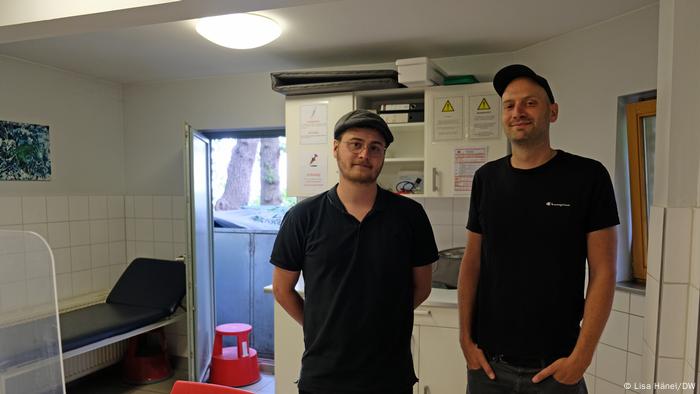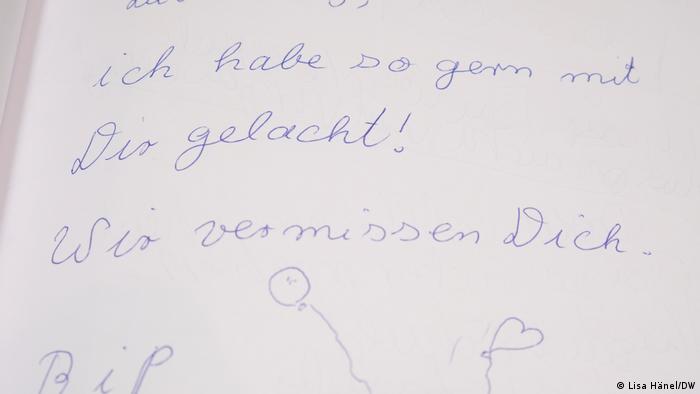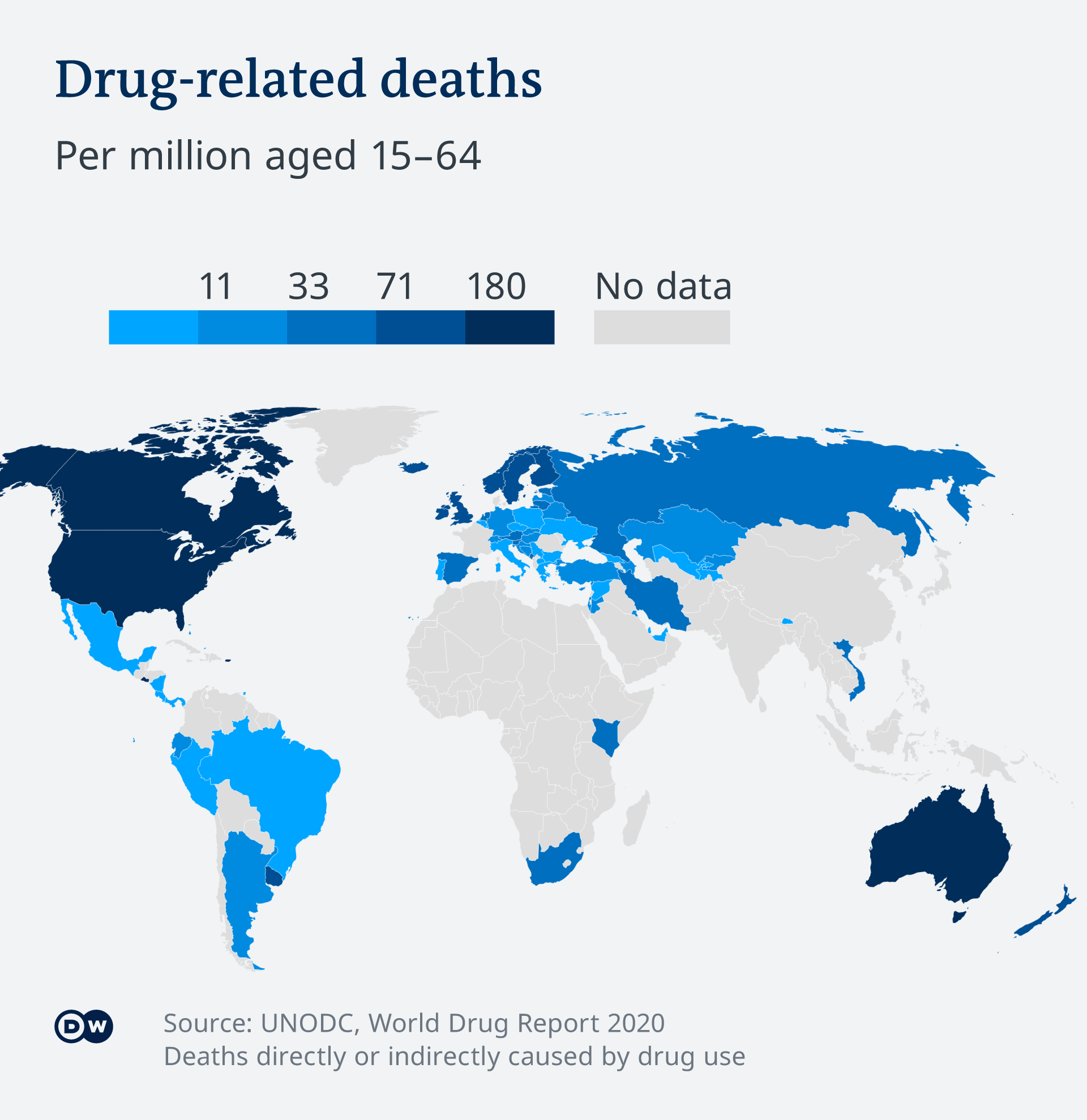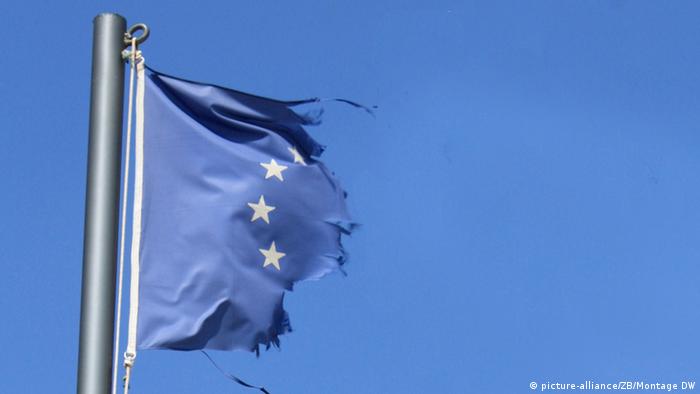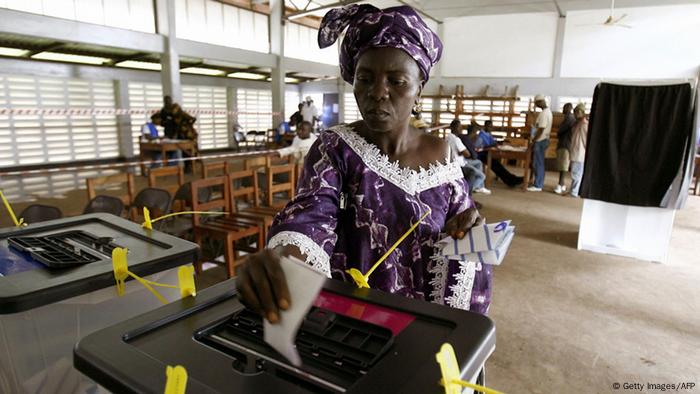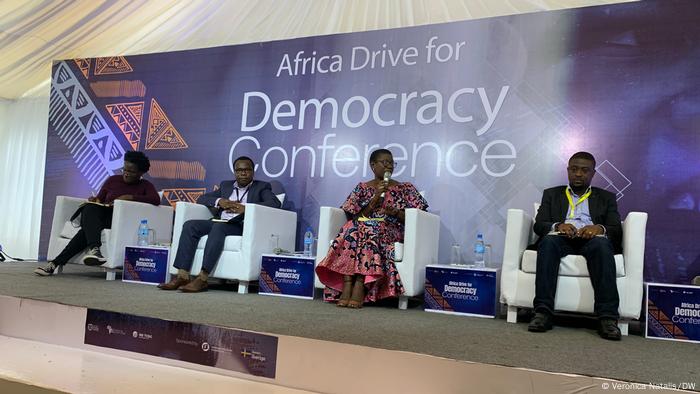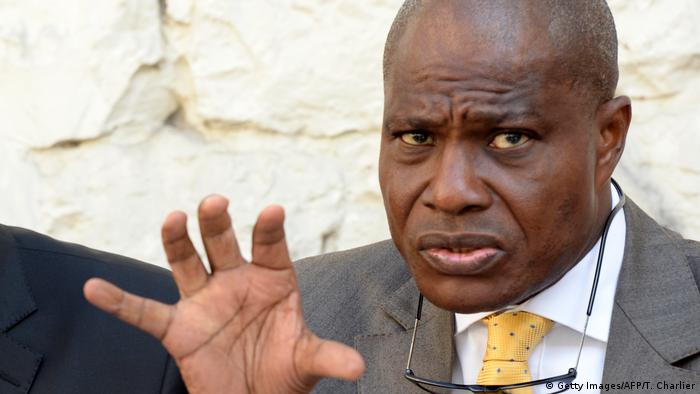Raglan Mine makes new offer to striking employees
United Steelworkers withdrew from negotiations last week; strike started around the end of May
Raglan Mine has presented a new offer to its unionized employees, days after the United Steelworkers withdrew from negotiations.
The new offer was put forward July 10, according to a news release from Glencore Group, Raglan Mine’s parent company.
The release does not say what is in the offer, but says it “allows Raglan Mine employees to obtain the best working conditions in the industry.”
“We sincerely hope that this offer can put an end to the labour dispute as quickly as possible,” said Pierre Barrette, vice-president of Raglan Mine, in the release.
Cimon Guy, a union representative, said the union is looking at the offer.
“Our negotiations committee will meet tomorrow to go over it in detail and decide our course of action following that,” Guy said in an email.
Raglan Mine produces mostly nickel, as well as small amounts of copper and cobalt. Its 630 unionized workers have been on strike since the end of May after the company and the union failed to reach a new collective agreement.
A mediator was appointed by the Quebec government to meet with both sides and broker a deal, but those meetings have not been successful.
Guy has said the union’s main demands involve better working and living conditions on site. Raglan has responded by saying it maintains some of the industry’s highest safety standards and salaries, while promoting a positive work culture at the mine.
Production at Raglan Mine, which is Nunavik’s largest employer, was halted after the strike was called, and all union employees were flown back to their home communities. Some production has since resumed.
Strike by 630 workers at Glencore's Raglan Mine in northern Quebec enters second month
28 June 2022
Around 630 workers—members of the United Steelworkers (USW)—at the Raglan Mine in northern Quebec, Canada, have been engaged in an indefinite strike since May 27, after voting by a massive 97.5 percent to walk off the job. Faced with rampant inflation and the company’s indifference to the plight of its workers, the strikers are determined to fight against subcontracting and attacks on their working and living conditions.
Glencore Group, Raglan’s owner, responded to the strike by announcing the suspension of its mining operations and the return of workers to their respective home regions. On Friday, June 17, it resumed some operations using subcontractors. “We are very concerned, to say the least, about the type of work being done at the mine and by whom,” said a miner who is a member of the union negotiating team. One day earlier, around 80 strikers picketed the Rouyn-Noranda airport in southwestern Quebec, where miners fly in and out of the Raglan facility.
The Raglan Mine is located in the remote northern region of Nunavik, on the Ungava Peninsula, 1800 km north of Montreal. Located between the villages of Salluit and Kangiqsujuaq, the mine relies on local Inuit communities to make up 20 percent of its workforce. As with many natural resource operations in the region, the Raglan Mine plays a key role in the local economy, with a significant portion of local residents involved in one way or another in the mine’s operations.
In spite of its name, the Raglan Mine is in fact a mining complex composed of four underground mines. While the mine primarily processes nickel, workers also extract other lucrative precious metals. In 2020, miners extracted nearly 40,000 tons of nickel, 9,000 tons of copper and more than 800 tons of cobalt. This large-scale output continued throughout the COVID-19 pandemic, as the government gave the mining industry the green light to continue operations and expose miners to the lethal coronavirus.
According to an estimate published by the USW, based on the company’s production data, miners extracted natural resources worth US$586 million in 2020. Considering that the price of nickel has more than doubled since 2020, and that the price of other metals has also risen significantly, revenues in 2022 could exceed $1 billion.
Despite the huge profits made at the operation, Glencore is denying its workers any genuine improvement in their conditions. Instead, the international conglomerate is intensifying its attacks on their jobs and working conditions.
A blatant example of management’s ruthless attacks on workers was the dismissal in March 2021 of unionized security workers at the Raglan Mine, after they rejected an offer from the company to renew their collective agreement. In a ruling issued on June 15, the Quebec Administrative Labour Tribunal condemned this action, which it determined was motivated by a desire to send “a clear message from the company to the other units (of unionized workers) that will soon be negotiating.”
As is the case for the vast majority of workers in the mining industry, Raglan’s workers live and work under harsh conditions. In addition to the “fly-in fly-out” procedure and the distance from their families, the workers labour 11 hours a day for 21 days in a row, followed by 14 days off.
Under these conditions and with inflation eating away at what little financial leeway families have left, the workers are determined to fight for their interests. They are demanding better wages, decent working conditions and an improved vacation plan. They also oppose Glencore’s increased use of subcontracting.
In addition to lower wages and fewer benefits, the use of subcontractors has increased so much in recent years that nearly half of the mine’s 1,200 employees work for a third party. This practice allows the multinational to save large sums of money, while all workers at the mine complex pay for this through stepped-up internal competition.
The company unquestionably has the financial means to meet the workers’ modest demands. Following its merger with Xstrata in 2013, the Glencore Group is one of the largest natural resource companies in the world.
Active in 35 countries, the company operates around 150 mining, metals and oil production facilities. Glencore is the largest nickel producer in Quebec and the fourth largest in the world. The company is headed by Ivan Glasenberg, Australia’s ninth richest man, who has a personal fortune of $12.2 billion.
While they face a multinational corporation determined to cut production costs to increase profits, the 630 striking workers also confront the union bureaucracy of the USW, which is affiliated with the Quebec Federation of Labour (QFL). The USW is working tirelessly to keep the strikers isolated, as shown by its announcement of just four one-time picket lines over two weeks, with Rouyn-Noranda being the last on the list.
The only small gesture of solidarity has come from USW Local 6586 at the ArcelorMittal plant in Contrecoeur northeast of Montreal, which is providing limited financial assistance of $1,100 per week. Yet the USW boasts that it is the largest private sector union in Quebec, with 60,000 members across a range of economic sectors. Beyond Quebec’s provincial borders, the union has over a million active and retired members across Canada, the United States and the Caribbean. However, the USW has refused to mobilize the full strength of its membership in support of the Raglan workers, leaving them to fight the global mining giant alone.
The Raglan strikers should draw the lessons from the USW’s betrayal of a massive strike vote by workers at Arconic’s aluminum facilities in Iowa, Tennessee, and Indiana earlier this month. Despite the overwhelming support for a strike among the workers, the USW blocked strike action before announcing a last-minute agreement with the company. The USW then rammed through the concessions-filled deal, which included real-terms pay cuts and the abolition of a performance bonus scheme, amid widespread speculation by workers that the voting process was rigged. “It felt like the union leadership was working for the company,” an Arconic worker told the WSWS.
While the USW felt compelled to call a strike at Raglan, it is feverishly working with the company behind the scenes to impose a similar sellout. USW and Glencore representatives have met on several occasions with a mediator appointed by the Quebec Labour Ministry led by the hard-right Coalition Avenir Quebec (CAQ) government. CAQ Premier Francois Legault, a multi-millionaire and former Air Transat CEO, has denounced wage levels in the province’s manufacturing sector as “too high.”
The pro-capitalist union apparatus enjoys a cozy relationship with corporate executives and the state apparatus, which finds expression in the corrupt practices of union bureaucrats. A series of recent court decisions revealed that at least four USW local officials in Canada were involved in embezzlement schemes. According to Nouvelles TVA, the union representatives used their positions to charge the union for personal expenses, issue duplicate bills and even write blank checks to each other. Unable to pay back the money, one of the former bureaucrats had his house seized last week.
The Raglan workers are not alone in their struggle. Over the past year, a wave of strikes has erupted among mine workers around the world—from the nickel mines of Sudbury in northern Ontario and the coalfields of Alabama to the Atacama Desert of Chile and the jungles of Colombia—demanding substantial wage increases and the restoration of hard-won gains.
The upsurge of struggles among miners internationally underscores that the conditions exist for Raglan workers to win their strike. To do so, they must break with the nationalist, pro-capitalist USW and create their own rank-and-file committee. The committee should fight for the expansion of the strike by making a powerful appeal to miners across Canada and internationally to wage a common fight against the multi-billion-dollar mining conglomerates. The striking miners should also link up their strike with working people battling the rising cost of living across Canada and around the world for a joint counteroffensive to defend jobs, wages and working conditions.
Around 630 workers—members of the United Steelworkers (USW)—at the Raglan Mine in northern Quebec, Canada, have been engaged in an indefinite strike since May 27, after voting by a massive 97.5 percent to walk off the job. Faced with rampant inflation and the company’s indifference to the plight of its workers, the strikers are determined to fight against subcontracting and attacks on their working and living conditions.
Glencore Group, Raglan’s owner, responded to the strike by announcing the suspension of its mining operations and the return of workers to their respective home regions. On Friday, June 17, it resumed some operations using subcontractors. “We are very concerned, to say the least, about the type of work being done at the mine and by whom,” said a miner who is a member of the union negotiating team. One day earlier, around 80 strikers picketed the Rouyn-Noranda airport in southwestern Quebec, where miners fly in and out of the Raglan facility.
The Raglan Mine is located in the remote northern region of Nunavik, on the Ungava Peninsula, 1800 km north of Montreal. Located between the villages of Salluit and Kangiqsujuaq, the mine relies on local Inuit communities to make up 20 percent of its workforce. As with many natural resource operations in the region, the Raglan Mine plays a key role in the local economy, with a significant portion of local residents involved in one way or another in the mine’s operations.
In spite of its name, the Raglan Mine is in fact a mining complex composed of four underground mines. While the mine primarily processes nickel, workers also extract other lucrative precious metals. In 2020, miners extracted nearly 40,000 tons of nickel, 9,000 tons of copper and more than 800 tons of cobalt. This large-scale output continued throughout the COVID-19 pandemic, as the government gave the mining industry the green light to continue operations and expose miners to the lethal coronavirus.
According to an estimate published by the USW, based on the company’s production data, miners extracted natural resources worth US$586 million in 2020. Considering that the price of nickel has more than doubled since 2020, and that the price of other metals has also risen significantly, revenues in 2022 could exceed $1 billion.
Despite the huge profits made at the operation, Glencore is denying its workers any genuine improvement in their conditions. Instead, the international conglomerate is intensifying its attacks on their jobs and working conditions.
A blatant example of management’s ruthless attacks on workers was the dismissal in March 2021 of unionized security workers at the Raglan Mine, after they rejected an offer from the company to renew their collective agreement. In a ruling issued on June 15, the Quebec Administrative Labour Tribunal condemned this action, which it determined was motivated by a desire to send “a clear message from the company to the other units (of unionized workers) that will soon be negotiating.”
As is the case for the vast majority of workers in the mining industry, Raglan’s workers live and work under harsh conditions. In addition to the “fly-in fly-out” procedure and the distance from their families, the workers labour 11 hours a day for 21 days in a row, followed by 14 days off.
Under these conditions and with inflation eating away at what little financial leeway families have left, the workers are determined to fight for their interests. They are demanding better wages, decent working conditions and an improved vacation plan. They also oppose Glencore’s increased use of subcontracting.
In addition to lower wages and fewer benefits, the use of subcontractors has increased so much in recent years that nearly half of the mine’s 1,200 employees work for a third party. This practice allows the multinational to save large sums of money, while all workers at the mine complex pay for this through stepped-up internal competition.
The company unquestionably has the financial means to meet the workers’ modest demands. Following its merger with Xstrata in 2013, the Glencore Group is one of the largest natural resource companies in the world.
Active in 35 countries, the company operates around 150 mining, metals and oil production facilities. Glencore is the largest nickel producer in Quebec and the fourth largest in the world. The company is headed by Ivan Glasenberg, Australia’s ninth richest man, who has a personal fortune of $12.2 billion.
While they face a multinational corporation determined to cut production costs to increase profits, the 630 striking workers also confront the union bureaucracy of the USW, which is affiliated with the Quebec Federation of Labour (QFL). The USW is working tirelessly to keep the strikers isolated, as shown by its announcement of just four one-time picket lines over two weeks, with Rouyn-Noranda being the last on the list.
The only small gesture of solidarity has come from USW Local 6586 at the ArcelorMittal plant in Contrecoeur northeast of Montreal, which is providing limited financial assistance of $1,100 per week. Yet the USW boasts that it is the largest private sector union in Quebec, with 60,000 members across a range of economic sectors. Beyond Quebec’s provincial borders, the union has over a million active and retired members across Canada, the United States and the Caribbean. However, the USW has refused to mobilize the full strength of its membership in support of the Raglan workers, leaving them to fight the global mining giant alone.
The Raglan strikers should draw the lessons from the USW’s betrayal of a massive strike vote by workers at Arconic’s aluminum facilities in Iowa, Tennessee, and Indiana earlier this month. Despite the overwhelming support for a strike among the workers, the USW blocked strike action before announcing a last-minute agreement with the company. The USW then rammed through the concessions-filled deal, which included real-terms pay cuts and the abolition of a performance bonus scheme, amid widespread speculation by workers that the voting process was rigged. “It felt like the union leadership was working for the company,” an Arconic worker told the WSWS.
While the USW felt compelled to call a strike at Raglan, it is feverishly working with the company behind the scenes to impose a similar sellout. USW and Glencore representatives have met on several occasions with a mediator appointed by the Quebec Labour Ministry led by the hard-right Coalition Avenir Quebec (CAQ) government. CAQ Premier Francois Legault, a multi-millionaire and former Air Transat CEO, has denounced wage levels in the province’s manufacturing sector as “too high.”
The pro-capitalist union apparatus enjoys a cozy relationship with corporate executives and the state apparatus, which finds expression in the corrupt practices of union bureaucrats. A series of recent court decisions revealed that at least four USW local officials in Canada were involved in embezzlement schemes. According to Nouvelles TVA, the union representatives used their positions to charge the union for personal expenses, issue duplicate bills and even write blank checks to each other. Unable to pay back the money, one of the former bureaucrats had his house seized last week.
The Raglan workers are not alone in their struggle. Over the past year, a wave of strikes has erupted among mine workers around the world—from the nickel mines of Sudbury in northern Ontario and the coalfields of Alabama to the Atacama Desert of Chile and the jungles of Colombia—demanding substantial wage increases and the restoration of hard-won gains.
The upsurge of struggles among miners internationally underscores that the conditions exist for Raglan workers to win their strike. To do so, they must break with the nationalist, pro-capitalist USW and create their own rank-and-file committee. The committee should fight for the expansion of the strike by making a powerful appeal to miners across Canada and internationally to wage a common fight against the multi-billion-dollar mining conglomerates. The striking miners should also link up their strike with working people battling the rising cost of living across Canada and around the world for a joint counteroffensive to defend jobs, wages and working conditions.
Glencore Violated Labour Law in Dismissing Workers at Its Raglan Mine, Quebec Tribunal Rules
Article content
MONTREAL — Resource giant Glencore violated labour laws when it dismissed unionized security officers at its Raglan Mine in March 2021, the Quebec government’s Administrative Labour Tribunal (Tribunal administratif du Travail) has ruled.
The tribunal’s ruling, released June 15, stems from a complaint filed by the United Steelworkers/Syndicat des Métallos, the union representing the security officers. The union argued before the tribunal that Glencore violated labour laws when it dismissed the workers after they rejected the company’s contract offer during negotiations for a collective agreement.
MONTREAL — Resource giant Glencore violated labour laws when it dismissed unionized security officers at its Raglan Mine in March 2021, the Quebec government’s Administrative Labour Tribunal (Tribunal administratif du Travail) has ruled.
The tribunal’s ruling, released June 15, stems from a complaint filed by the United Steelworkers/Syndicat des Métallos, the union representing the security officers. The union argued before the tribunal that Glencore violated labour laws when it dismissed the workers after they rejected the company’s contract offer during negotiations for a collective agreement.
Advertisement 2
Article content
The ruling concludes that Glencore “obstructed the activities of the union and its members” and “failed in its obligation to bargain diligently and in good faith.”
While the ruling by administrative judge Johanne Despatis does not include an order that Glencore reinstate the dismissed employees, it opens the door to remedies for all those who were affected by the company’s unfair labour practices.
The ruling includes several harsh and scathing criticisms of Glencore’s behaviour. It portrays an employer with constant anti-union preoccupations, “thinly veiled hostility,” “driven by anti-union motives designed to crush the union’s goals” and by a desire to send “a clear message from the company to the other units (of unionized workers) that will soon be in negotiations.”
Those other workers include 630 unionized employees at Raglan Mine, members of Steelworkers Local 9449, who have been on strike since May 27. The strikers are seeking better working conditions and greater respect from Glencore, including a reduction of the company’s extensive use of subcontractors.
“It is appalling that Glencore was preparing for the current negotiations by resorting to unfair and bad faith labour practices, undermining our activities and throwing the families of these security officers out on the street,” said Harold Arseneault, a Steelworkers’ union representative.
“Glencore’s methods are overwhelmingly in bad faith and our members are determined to get the respect they’re seeking,” Arseneault said.
“The recognition of these illegal practices in the tribunal’s decision is extremely important to us,” said Nicolas Marchand, president of the Steelworkers’ bargaining unit that represents the dismissed security officers.
“This ruling exposes what we have experienced over the last eight years, which is not widely known. It demonstrates the legitimacy of our legal case and gives a voice and hope to union members in small bargaining units. It also gives us strength to move forward with the next steps,” Marchand said.
Steelworkers’ union leaders, legal advisors and local union representatives will be meeting over the next few days to assess the options that are open to the union as a result of the labour tribunal’s ruling and to decide on future actions.
The United Steelworkers/Syndicat des Métallos, affiliated with the Quebec Federation of Labour, is the largest private-sector union in Quebec, representing more than 60,000 workers in all economic sectors.

View source version on businesswire.com: https://www.businesswire.com/news/home/20220619005028/en/

The ruling concludes that Glencore “obstructed the activities of the union and its members” and “failed in its obligation to bargain diligently and in good faith.”
While the ruling by administrative judge Johanne Despatis does not include an order that Glencore reinstate the dismissed employees, it opens the door to remedies for all those who were affected by the company’s unfair labour practices.
The ruling includes several harsh and scathing criticisms of Glencore’s behaviour. It portrays an employer with constant anti-union preoccupations, “thinly veiled hostility,” “driven by anti-union motives designed to crush the union’s goals” and by a desire to send “a clear message from the company to the other units (of unionized workers) that will soon be in negotiations.”
Those other workers include 630 unionized employees at Raglan Mine, members of Steelworkers Local 9449, who have been on strike since May 27. The strikers are seeking better working conditions and greater respect from Glencore, including a reduction of the company’s extensive use of subcontractors.
“It is appalling that Glencore was preparing for the current negotiations by resorting to unfair and bad faith labour practices, undermining our activities and throwing the families of these security officers out on the street,” said Harold Arseneault, a Steelworkers’ union representative.
“Glencore’s methods are overwhelmingly in bad faith and our members are determined to get the respect they’re seeking,” Arseneault said.
“The recognition of these illegal practices in the tribunal’s decision is extremely important to us,” said Nicolas Marchand, president of the Steelworkers’ bargaining unit that represents the dismissed security officers.
“This ruling exposes what we have experienced over the last eight years, which is not widely known. It demonstrates the legitimacy of our legal case and gives a voice and hope to union members in small bargaining units. It also gives us strength to move forward with the next steps,” Marchand said.
Steelworkers’ union leaders, legal advisors and local union representatives will be meeting over the next few days to assess the options that are open to the union as a result of the labour tribunal’s ruling and to decide on future actions.
The United Steelworkers/Syndicat des Métallos, affiliated with the Quebec Federation of Labour, is the largest private-sector union in Quebec, representing more than 60,000 workers in all economic sectors.
View source version on businesswire.com: https://www.businesswire.com/news/home/20220619005028/en/

Raglan Mine to gradually resume
mining operations
LAVAL, QC, June 16, 2022 /CNW Telbec/ - Raglan Mine, a Glencore company, has announced the gradual resumption of certain operations at its mine beginning June 17, in the context of the strike called by the United Steelworkers Union, Local 9449 on May 27.
Operations will be carried out by professional staff and contractors who were already performing similar work prior to the dispute, in accordance with the provisions of the Quebec Labour Code.
Authorized personnel will gradually return to the site to perform tasks related to infrastructure maintenance (roads, water management systems, heating, etc.) as well as increasing the ore reserve at the surface. The concentrator is not currently in operation and the level of mining activity at the site will remain significantly below normal. Ensuring Raglan Mine's health and safety standards are met will remain the priority during this resumption of activities.
"In addition to facilitating the rapid resumption of full operations once a new agreement is signed, this return will also enable us to uphold our agreement with our Inuit partners," said Pierre Barrette, Vice President of Raglan Mine.
Raglan Mine upholds its commitment to Nunavik communities
Signed in 1995, the Raglan Agreement provides for the employment of workers from Nunavik communities and ensures that Inuit directly benefit from the socio-economic advantages of mining operations. The precedence of the Raglan Agreement over any other arrangement is recognized in the collective agreement between the company and the union.
Many of the subcontracting companies that work at Raglan Mine are owned by the Inuit communities of the region. They contribute to the economic and social development of the Far North. Within the context of severe labour shortages, ensuring the retention of employees working for local contractors is a priority for the company.
PIECE WORK
Resuming certain operations at Raglan Mine also makes it possible to preserve a portion of the royalties paid by contractors to the Inuit communities.
- work paid for according to the amount produced:"workers did piecework at home" · "he was paid on a piecework basis"
Impasse in negotiations
Raglan Mine has once again reiterated to the mediator appointed by the Ministry of Labour, Employment and Social Solidarity its willingness to return to the negotiating table, without a favourable response from the union.
"We are disappointed that we have come to an impasse in negotiations. We hope to resume discussions quickly in order to reach a mutually beneficial agreement," added Mr. Barrette.
Until a new collective agreement is ratified, Glencore's Integrated Nickel Operations will utilize alternative concentrate supplies to maintain its nickel processing operations at the Sudbury smelter at full capacity.
Raglan Mine presented a first global offer to its employees affiliated with the United Steelworkers Union, Local 9449 in early May. If ratified, it would place Raglan Mine workers among the highest paid in the industry.
www.glencore.ca/raglan
www.glencore.com
Notes for Editors
Raglan Mine
Raglan Mine is part of the Glencore Group, one of the world's largest diversified natural resource companies. Its operations are located on the northern edge of Quebec. Its property stretches 70 kilometres from east to west, with a series of high-grade ore deposits scattered along its length, primarily nickel and copper.
With the establishment of the Raglan Agreement in 1995, a historic agreement with the Inuit communities of Nunavik, Raglan Mine is a pioneer in the industry. Raglan Mine employs more than 1,200 people, 20% of whom are from local Inuit communities. Raglan Mine is also an active participant in the economy of Nunavik and Quebec, contributing $690 million to Quebec's GDP, including $147 million from its suppliers. On average, more than 2,700 jobs are supported annually. Located far from any city, its network of suppliers extends to the four corners of Quebec, with 70% of its goods and services suppliers situated in the province.
Raglan Mine aspires to be a model company in the mining industry by promoting the development of its human resources, demonstrating fairness towards its multicultural workforce, and acting with respect for the communities and the environment. Raglan Mine is committed to a safe, productive, healthy, and stable work environment for years to come.
Glencore
Glencore is one of the world's largest global diversified natural resource companies and a major producer and marketer of more than 60 responsibly-sourced commodities that advance everyday life. The Group's operations comprise around 150 mining and metallurgical sites and oil production assets.
With a strong footprint in over 35 countries in both established and emerging regions for natural resources, Glencore's industrial activities are supported by its global network of more than 30 marketing offices.
Glencore's customers are industrial consumers, such as those in the automotive, steel, power generation, battery manufacturing and oil sectors. We also provide financing, logistics and other services to producers and consumers of commodities. Glencore's companies employ around 145,000 people, including contractors.
Glencore is proud to be a member of the Voluntary Principles on Security and Human Rights and the International Council on Mining and Metals. We are an active participant in the Extractive Industries Transparency Initiative. Our ambition is to be a net zero total emissions company by 2050.
LAVAL, QC, June 16, 2022 /CNW Telbec/ - Raglan Mine, a Glencore company, has announced the gradual resumption of certain operations at its mine beginning June 17, in the context of the strike called by the United Steelworkers Union, Local 9449 on May 27.
Operations will be carried out by professional staff and contractors who were already performing similar work prior to the dispute, in accordance with the provisions of the Quebec Labour Code.
Authorized personnel will gradually return to the site to perform tasks related to infrastructure maintenance (roads, water management systems, heating, etc.) as well as increasing the ore reserve at the surface. The concentrator is not currently in operation and the level of mining activity at the site will remain significantly below normal. Ensuring Raglan Mine's health and safety standards are met will remain the priority during this resumption of activities.
"In addition to facilitating the rapid resumption of full operations once a new agreement is signed, this return will also enable us to uphold our agreement with our Inuit partners," said Pierre Barrette, Vice President of Raglan Mine.
Raglan Mine upholds its commitment to Nunavik communities
Signed in 1995, the Raglan Agreement provides for the employment of workers from Nunavik communities and ensures that Inuit directly benefit from the socio-economic advantages of mining operations. The precedence of the Raglan Agreement over any other arrangement is recognized in the collective agreement between the company and the union.
Many of the subcontracting companies that work at Raglan Mine are owned by the Inuit communities of the region. They contribute to the economic and social development of the Far North. Within the context of severe labour shortages, ensuring the retention of employees working for local contractors is a priority for the company.
PIECE WORK
Resuming certain operations at Raglan Mine also makes it possible to preserve a portion of the royalties paid by contractors to the Inuit communities.
- work paid for according to the amount produced:"workers did piecework at home" · "he was paid on a piecework basis"
Impasse in negotiations
Raglan Mine has once again reiterated to the mediator appointed by the Ministry of Labour, Employment and Social Solidarity its willingness to return to the negotiating table, without a favourable response from the union.
"We are disappointed that we have come to an impasse in negotiations. We hope to resume discussions quickly in order to reach a mutually beneficial agreement," added Mr. Barrette.
Until a new collective agreement is ratified, Glencore's Integrated Nickel Operations will utilize alternative concentrate supplies to maintain its nickel processing operations at the Sudbury smelter at full capacity.
Raglan Mine presented a first global offer to its employees affiliated with the United Steelworkers Union, Local 9449 in early May. If ratified, it would place Raglan Mine workers among the highest paid in the industry.
www.glencore.ca/raglan
www.glencore.com
Notes for Editors
Raglan Mine
Raglan Mine is part of the Glencore Group, one of the world's largest diversified natural resource companies. Its operations are located on the northern edge of Quebec. Its property stretches 70 kilometres from east to west, with a series of high-grade ore deposits scattered along its length, primarily nickel and copper.
With the establishment of the Raglan Agreement in 1995, a historic agreement with the Inuit communities of Nunavik, Raglan Mine is a pioneer in the industry. Raglan Mine employs more than 1,200 people, 20% of whom are from local Inuit communities. Raglan Mine is also an active participant in the economy of Nunavik and Quebec, contributing $690 million to Quebec's GDP, including $147 million from its suppliers. On average, more than 2,700 jobs are supported annually. Located far from any city, its network of suppliers extends to the four corners of Quebec, with 70% of its goods and services suppliers situated in the province.
Raglan Mine aspires to be a model company in the mining industry by promoting the development of its human resources, demonstrating fairness towards its multicultural workforce, and acting with respect for the communities and the environment. Raglan Mine is committed to a safe, productive, healthy, and stable work environment for years to come.
Glencore
Glencore is one of the world's largest global diversified natural resource companies and a major producer and marketer of more than 60 responsibly-sourced commodities that advance everyday life. The Group's operations comprise around 150 mining and metallurgical sites and oil production assets.
With a strong footprint in over 35 countries in both established and emerging regions for natural resources, Glencore's industrial activities are supported by its global network of more than 30 marketing offices.
Glencore's customers are industrial consumers, such as those in the automotive, steel, power generation, battery manufacturing and oil sectors. We also provide financing, logistics and other services to producers and consumers of commodities. Glencore's companies employ around 145,000 people, including contractors.
Glencore is proud to be a member of the Voluntary Principles on Security and Human Rights and the International Council on Mining and Metals. We are an active participant in the Extractive Industries Transparency Initiative. Our ambition is to be a net zero total emissions company by 2050.
In the News June 9
Nunavik, Northern Quebec
Raglan Mine Workers Strike for Rights and Dignity

On May 26, the 630 production workers at the Raglan Mine in Nunavik went on an indefinite general strike against the deterioration of their working conditions and for respect from their employer, which they say is totally lacking. Nunavik is the area of Quebec north of the 55th parallel. The Raglan mine is owned by global mining/metallurgical giant Glencore. Workers’ Forum recently spoke with Éric Savard, President of United Steelworkers (USW) Local 9449, which represents these workers and the mine’s entire 850 or so unionized workers.
Workers’ Forum: Can you first inform us about Raglan Mine’s operations?
Éric Savard: Raglan Mine began its operations in 1997, 25 years ago. It has had many owners, including Falconbridge, Xstrata and now Glencore. We mainly produce nickel, which represents about 70 per cent of the ore mined, and we also have copper, cobalt, palladium and other ores. There’s gold as well. The mine’s unionized workforce includes 630 production workers, currently on strike, plus workers with subcontractor Kiewit, the Katinniq Transport workers who move the ore to the ships at the port in Deception Bay, technicians, office staff, and security guards. The production workers work on a commuting fly-in, fly-out basis, often working for 21 consecutive days. They come from all over Quebec as well as from New Brunswick. When Glencore closed the Brunswick smelter in Belledune in northern New Brunswick at the end of 2019 some workers from the smelter came to work with us.
WF: In the Steelworkers’ press release, there’s an emphasis on the demand for respect that drove the workers to strike. Can you tell us more about that?
ES: Since Glencore took over Xstrata we have experienced many rollbacks. This includes an increase in our working hours, an increase in production with the same number of workers, cuts in work breaks. Some of these rollbacks affected conditions that have existed for 20 years. As well, health and safety meetings previously scheduled at the beginning of various work group shifts now take place on workers’ time, not company time. We have experienced a great loss in working conditions.
The straw that broke the camel’s back was when the security guards were fired about 15 months ago after rejecting the company’s offer. We are in court over this and are still awaiting a ruling. With Glencore, we are constantly filing grievances. Glencore disputes everything, and we have to fight in court over everything, – for our weeks of vacation, to be paid for the day we fly to the mine, etc. There’s a lot of accumulated frustration on these issues.
Glencore has also neglected health and safety conditions. For example, due to a big increase in production we realized that the access ramps had become unsafe. The workers pulled together and rebolted all the ramps. Instead of thanking them, Glencore claimed that production was behind schedule and began harassing the workers to work overtime and threatened to downgrade their work scale levels.
In addition, the company began dictating that for the lunch hour, workers’ transportation time would now be on their time, not company time. Transportation time had been paid by the company for 25 years and it worked well so there was no reason to change it. It can take a worker 15 to 20 minutes to get from the work site to the lunchroom. Now the time it takes to travel to the lunch room is counted as part of the lunch break so workers don’t get a full hour for rest and a meal when they really need it, given all the hours of work they’re required to put in. When you work 21 days in a row, the last thing you want to do is have a fight for your lunch hour. The workers were exasperated with all this.
WF: In your press release you say that subcontracting is a major problem at the mine. Can you explain?
ES: As we say in our release, we have a situation where there are often many more subcontract workers on the mine site than unionized workers. That doesn’t make sense. The people who are hired through subcontracting earn less and their conditions are worse. This means fewer economic benefits for the regions of Quebec where these workers are from.
In addition, this prevents young people from advancing to higher levels with better wages and conditions. Glencore hires a lot of subcontract workers in the middle levels which means that young people can no longer move up the ladder and get training to advance. We’re at a point where we have 30 to 40 per cent subcontract workers now.
Meanwhile, the overall conditions of subcontract workers are inferior to those of unionized workers. Accommodations are not as good, the quality of food is lower. Increasing the number of subcontract workers is not good for workers overall. How is it possible that a big multinational like Glencore is expanding the use of cheap labour and imposing bad working conditions within its facilities?
We are trying to improve everyone’s conditions, increase our hourly rates, improve the pension fund, increase the workers’ standard of living.
WF: Would you like to add something in conclusion?
ES: We have been observing for years that Glencore is regressing in terms of workers’ welfare and protection. We want to see the improvements we are seeking written clearly into the collective agreement. Maybe this is how we’ll stop the grievances and the unnecessary conflicts and improve everyone’s lot.
Workers’ Forum, posted June 9, 2022
Workers walk out at Glencore’s Raglan nickel mine
30TH MAY 2022
BY: MARIAAN WEBB - CREAMER MEDIA DEPUTY EDITOR ONLINE
 The Raglan mine, in Quebec
The Raglan mine, in Quebec
Diversified miner Glencore has suspended production at its Raglan nickel and copper mine, in Quebec, after 630 unionised workers went on strike late on Friday night.
The parties met on Friday in the presence of a mediator, without breaking an impasse in wage negotiations.
Glencore had tabled an offer to United Steelworkers Union (USW) Local 9449, representing production and maintenance workers, that placed its employees among the best paid in the mining industry.
"We believe the global offer presented to the union was fair and mutually beneficial for all parties. The union's actions are particularly disappointing considering the recent arrival of an independent mediator and the openness the company demonstrated to improve the initial offer," said Raglan VP Pierre Barrette.
However, USW Local 9449 president Eric Savard said union members often work 11-hour shifts, for 21 consecutive days, at the isolated, fly-in/fly-out nickel mining operations in Nunavik. The increased use of subcontractors, who work under inferior conditions at Raglan mine, is another key issue in the labour dispute.
“It has reached the point where there are often many more contractors at the mine site than unionised workers. It doesn't make sense. This means fewer economic benefits for the regions of Quebec, while this multinational corporation extracts huge profits by exploiting our natural resources,” said Savard.
In addition to the use of subcontractors, other stumbling blocks in negotiations include vacations, working conditions and wages. Above all, however, workers said that they demanded more respect from Glencore.
“Glencore has been continually pushing the limits. It even balks at providing a proper lunch hour to workers who are working 11 hours a day, 21 days in a row. It’s reached the point where those who refuse to work overtime are given the cold shoulder by the bosses. Living conditions at the mining camp have deteriorated over the years. The employer systematically quibbles over the living and working conditions of employees who are away from their families for long periods of time. It is time for this company to show greater respect for the workers who are generating its profits of tens of millions of dollars each year,” Savard added.
Glencore stated that the company was ready to return to the negotiating table to continue negotiations as soon as possible in order to reach a mutually beneficial agreement. ![]()



